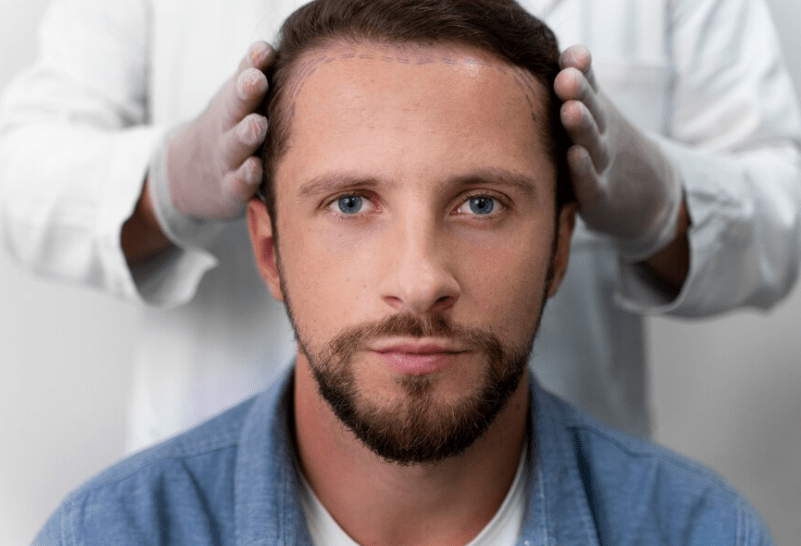Introduction:
Hair loss is a prevalent condition affecting individuals worldwide, impacting their confidence and quality of life. As technology advances, various treatments have emerged to combat this issue, including hair transplant surgery and platelet-rich plasma (PRP) therapy. Both methods aim to stimulate hair growth and restore a fuller head of hair. However, discerning which option is superior necessitates a thorough understanding of their mechanisms, efficacy, and potential drawbacks.
Exploring Hair Transplant:
Hair transplant surgery involves relocating hair follicles from a donor site to areas experiencing hair loss, typically the scalp. The procedure can be executed using two primary techniques: follicular unit transplantation (FUT) and follicular unit extraction (FUE). In FUT, a strip of hair-bearing skin is harvested from the donor area and then dissected into individual follicular units for transplantation. Conversely, FUE entails extracting follicular units directly from the donor site using a small punch tool.
Advantages of Hair Transplant:
1. Lasting Results: One of the most notable advantages of hair transplant surgery is its ability to provide enduring results. Once the transplanted hair follicles take root in the recipient area, they continue to grow naturally, yielding long-term hair growth.
2. Natural Appearance: Hair transplant procedures are meticulously performed to ensure the transplanted hair seamlessly blends with the existing hair, resulting in a natural-looking outcome. This aesthetic enhancement is pivotal for bolstering patients’ confidence and satisfaction.
3. Suitable for Advanced Hair Loss: Hair transplant surgery is often recommended for individuals grappling with advanced hair loss or balding, as other non-surgical treatments may prove ineffective.
Understanding PRP Therapy:
PRP therapy is a minimally invasive procedure that employs the patient’s own blood to stimulate hair growth. The process entails extracting a small blood sample from the patient, which is subsequently centrifuged to isolate platelet-rich plasma. The concentrated PRP is then injected into the scalp, targeting areas afflicted by hair loss to foster hair regrowth.
Advantages of PRP Therapy:
1. Non-Surgical Approach: Unlike hair transplant surgery, PRP therapy is a non-surgical procedure, rendering it a preferred option for individuals averse to invasive treatments or those ineligible for surgery.
2. Safety Profile: PRP therapy is deemed safe, as it utilizes the patient’s blood, thereby minimizing the risk of allergic reactions or adverse effects. The procedure is generally well-tolerated with minimal downtime.
3. Stimulates Hair Follicles: PRP contains growth factors and cytokines that facilitate tissue repair and regeneration. When administered into the scalp, PRP stimulates dormant hair follicles, prompting them to enter the active growth phase and generate new hair strands.
Comparative Effectiveness:
While both hair transplant surgery and PRP therapy have demonstrated efficacy in addressing hair loss, their effectiveness may hinge on various factors, including the severity of hair loss, underlying causes, and individual response to treatment.
Hair transplant surgery is typically recommended for individuals contending with advanced hair loss or those seeking a permanent solution. The procedure yields predictable results and substantial improvement in hair density, particularly in the transplanted areas. Nonetheless, hair transplant surgery may necessitate multiple sessions and entail a lengthier recovery period vis-à-vis PRP therapy.
Conversely, PRP therapy is more suitable for individuals in the early stages of hair loss or those grappling with diffuse thinning. While PRP may not yield the same level of density as hair transplant surgery, it can effectively impede hair loss progression and foster the growth of finer, healthier hair. PRP therapy may also be utilized as a complementary treatment alongside hair transplant surgery to augment outcomes and expedite healing.
Conclusion:
In conclusion, both hair transplant surgery and PRP therapy offer viable solutions for mitigating hair loss and reinstating hair growth. The choice between the two modalities hinges on several factors, including patient preferences, the extent of hair loss, and desired outcomes. While hair transplant surgery provides lasting results and superior hair density, PRP therapy presents a non-surgical alternative with minimal downtime.
For individuals contemplating hair restoration treatments in Ahmedabad, it is imperative to seek consultation from a reputable clinic specializing in these procedures. Bellisima Cosmetic is renowned as the premier hair transplant clinic in Ahmedabad, offering state-of-the-art hair restoration solutions tailored to each patient’s unique needs. Additionally, Bellisima Cosmetic boasts expertise in various cosmetic procedures, including liposuction, rhinoplasty, nose surgery, and body contouring surgery, making it a comprehensive destination for aesthetic enhancements. Whether pursuing hair transplant, PRP therapy, or other cosmetic interventions, patients can entrust Bellisima Cosmetic for exceptional results and personalized care.

As the editor of the blog, She curate insightful content that sparks curiosity and fosters learning. With a passion for storytelling and a keen eye for detail, she strive to bring diverse perspectives and engaging narratives to readers, ensuring every piece informs, inspires, and enriches.










